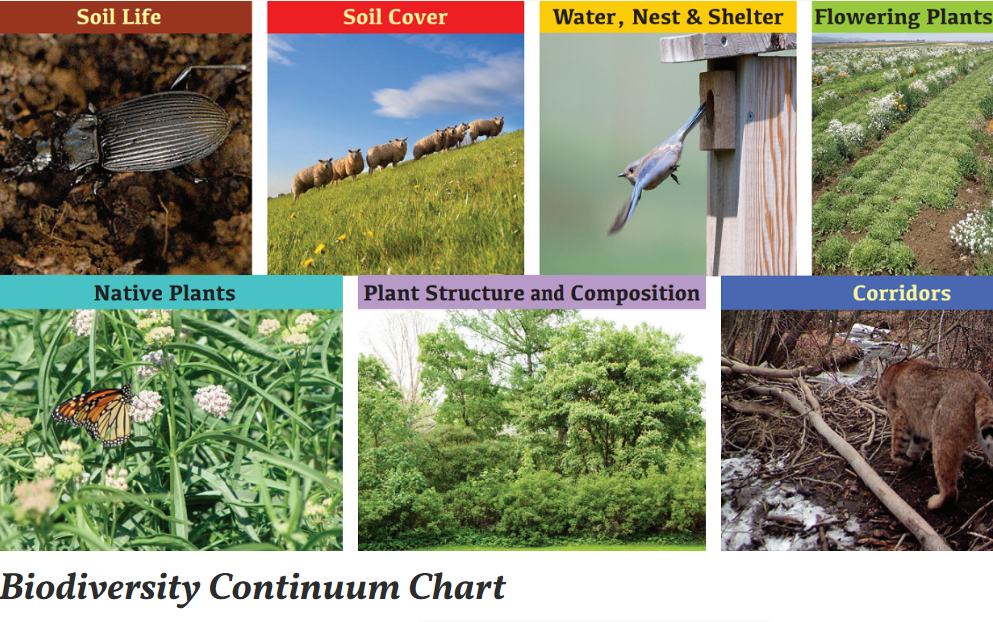Ron Whitehurst, PCA and co-owner Rincon-Vitova Insectaries, Inc.
The SPM Roadmap will be released by the California Department of Pesticide Regulation by the end of 2022. It will be a great step forward. To achieve the SPM goals, we believe the focus should be at a regional level. There is a parallel with federal IPM development with four USDA National Institute of Food and Agriculture Regional Centers that coordinate, enhance, and facilitate the flow of resources and information, including grants management, data acquisition and sharing, and accountability for resources. They help people organize IPM projects, create communications and learning forums, host webinars, moderate meetings, help state or local entities develop and disseminate information or whatever serves local goals. California Regional SPM Centers can play a similar role to expand and extend the knowledge base by such actions as follows:
- Reflect the continuum framework, i.e. chemical input-based to biological input-based to biodiversity-based farming systems,
- Research low-hazard and low-risk substitution tools necessary for transition,
- Facilitate community learning to integrate science, experience, and traditional and intuitive ways of knowing,
- Gather data for models that help teach the effects of agroecological practices on biodiversity and ecosystem services,
- Support learning for success in a biodiversity-based paradigm through seeing the limits and false economies in the efficiency/substitution paradigm,
- Facilitate learning that improves consultant and farmer decision-making in situations of uncertainty,
- Improve communication between regulatory agencies and educators at public institutions with early engagement of educators of SPM in the decision process on aligned curricula and training of successful SPM practitioners,
- Include PCAs as active and respected players in the information pipeline especially in the area of field research, educational programs, and individualized grower assistance and follow up, and
- Showcase farms on their way to biodiversity-based systems that will attract added revenue from carbon and eco-credits.
Among the opportunities with regional planning and programs, we’ll describe those that have not been discussed as much: Resource Conservation Districts, field scout training, regional food hubs and regional insectaries.
Resource Conservation Districts are already a primary source of Technical Assistance and many employ people with backgrounds in agroecology and biodiversity conservation. There are 95 RCDs. Their boards of directors are from the region and tuned to local needs and resources. Their mission is natural resource conservation and learning how biodiversity-based farming systems support that mission through farmer-to-farmer learning and relevant farmer-directed research. They are an ideal focal point for stakeholders to consult and agree on strengths, needs, barriers and to make transparent decisions about how to distribute funding.

Wild Farm Alliance 2017 tool for organic farmers to work with RCDs to conserve biodiversity.
Biological control field scout training is a needed area of development. Local colleges and universities, RCDs and the Cooperative Extension can collaborate to define the knowledge base for field scouts to monitor pest and natural enemy populations and apply biological control practices and tools, including installation and care of hedgerows, border plantings, interplantings, silvopasture, and agroforestry within an agroecological continuum framework. There are opportunities for inclusion and social equity values, for women, lower-income people, people of color, and especially farmworkers. Field scouting, like nursery work, is a path to employability in drug rehab programs. Some farmworkers have strong aptitude and desire to be field scouts.
Regional food hubs are important for connecting farmers and ranchers with institutional buyers (restaurants, hospitals, schools, etc) and end consumers. They help farmers gain access to larger markets so they can focus more on farming and less on marketing, distribution, etc. Food hubs channel buyer needs and enable them to prioritize working with those farmers with organic or comparable certification.
Regional insectaries have a long history in California. San Diego County Department of Agriculture was rearing Cryptolaemus for release into local lemon orchards at an insectary in Chula Vista in 1929 and other county insectaries followed. In the 1950s they were all funded by federal, state or county governments and then some by farmer cooperatives or pest control districts. The Fillmore Citrus Protective District (FCPD), a successful grower cooperative, had been formed to eradicate citrus pests, but an insectary to produce beneficial insects was added when the impracticality of eradication became evident.
Regional insectaries are an ideal focal point for collaboration in the training of both insectary workers and field scouts. Insectaries of the future must be grower-led cooperatives while benefiting from researchers to ensure uncompromised quality in biological control monitoring and interventions as well as products. In this model, regional cooperative insectaries can benefit the general community as well as farmers, assist with classical biological control projects, mass-rear and release augmentative biological control agents, and colonize and monitor released organisms. The membership of a regional insectary should democratically set priorities and plans about how to minimize toxic inputs, maximize grower economic sustainability, harmonize the urban-rural interface, and protect farmland.
The ownership structure for regional insectaries best includes per acre member dues by growers, land-owners, and various districts, along with a financial contribution from local jurisdiction(s). The structure should have a check and balance on potential conflicting interests that may arise between insectary management, researchers and large growers. The manager must juggle the needs and strengths of a broad community of stakeholders to remain relevant and viable. All stakeholders must both inform and follow the lead of the farmers, PCAs, farmworkers, and specialized agricultural workers and Field Scouts. Grower-led regional insectaries are the way of the future.
In my next post we’ll go deeper into how to teach and support Pest Control Advisors and field scouts to achieve biological control and help growers transition to less dependence on pesticides.

0 Responses to “Our Vision for Successful SPM – Part 5: Regional Focus ”